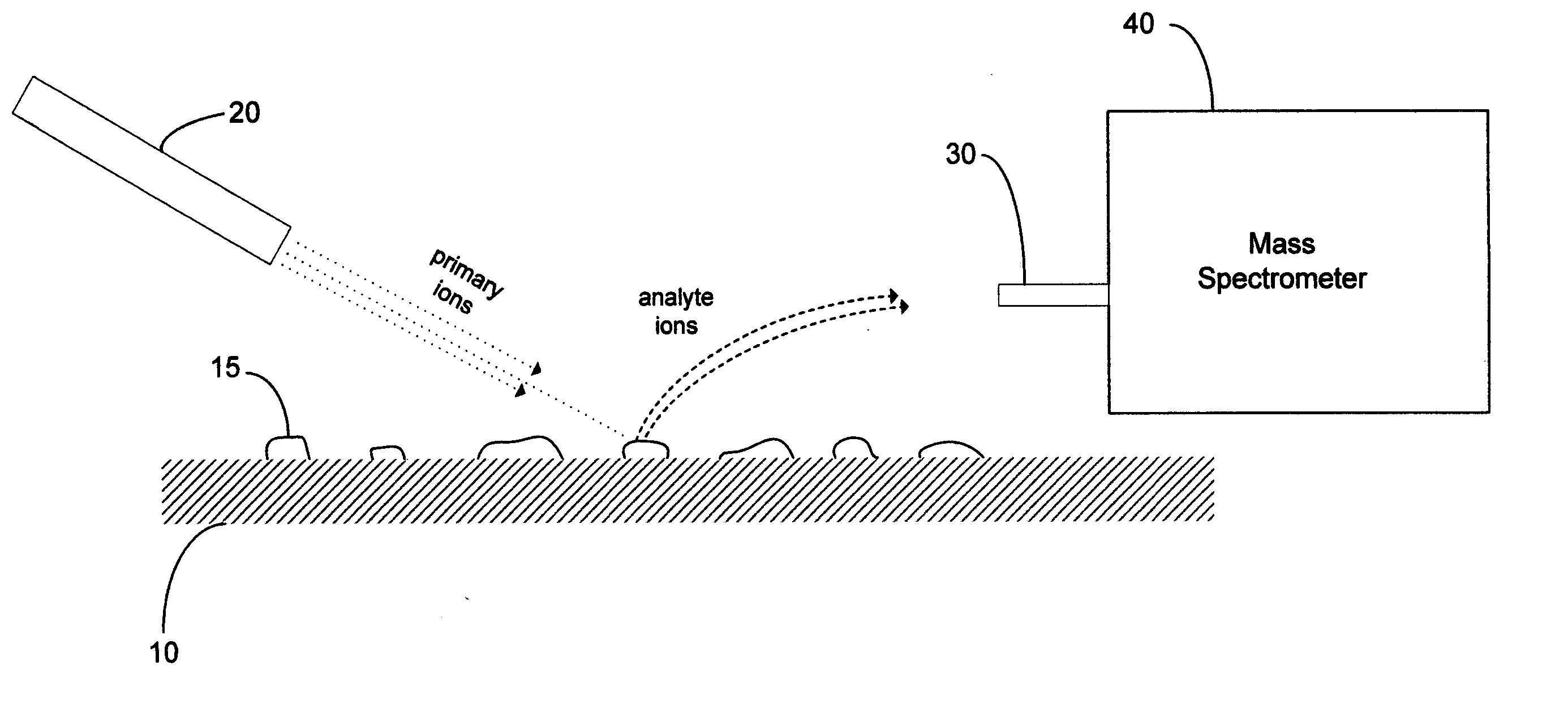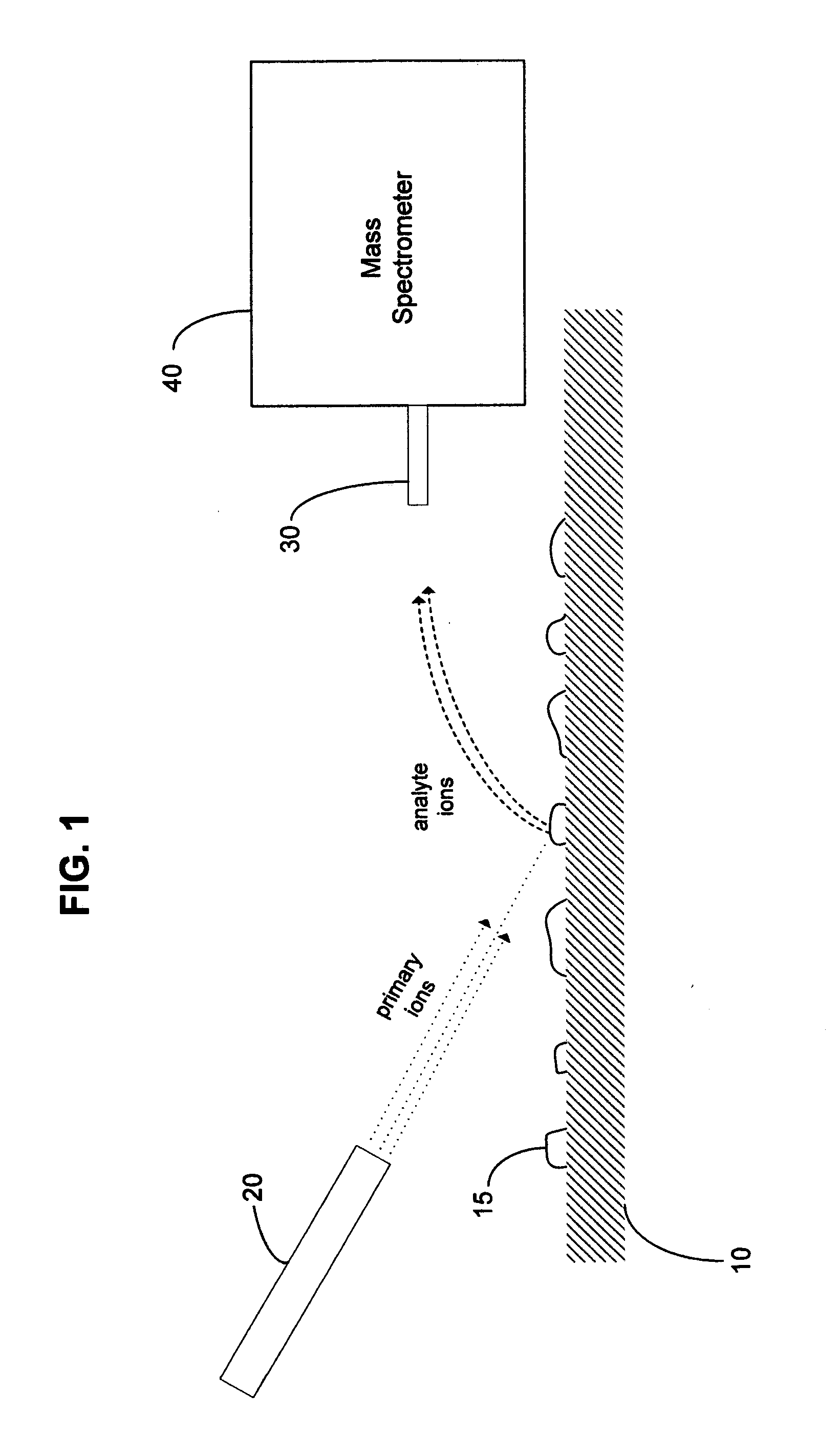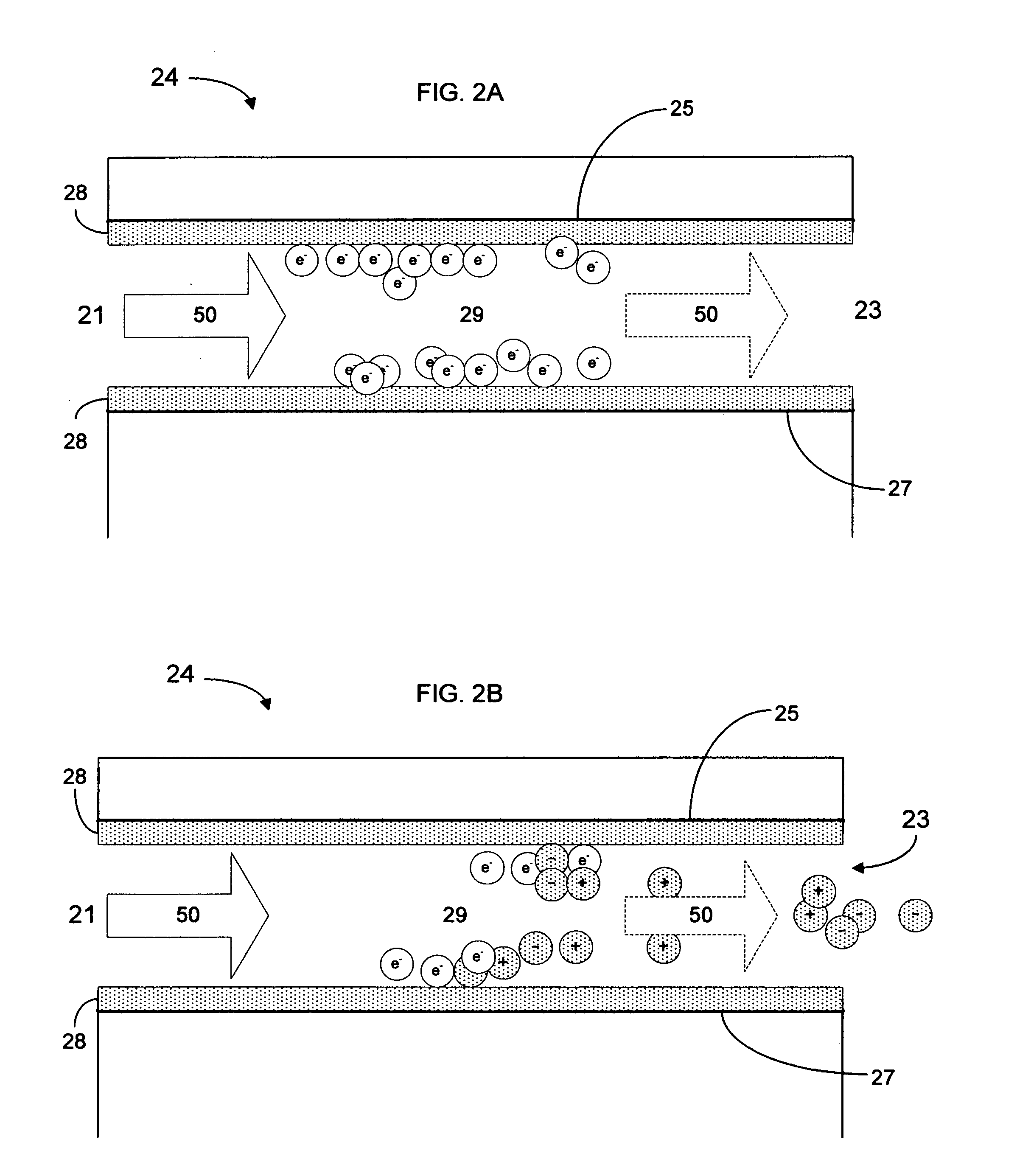Method and apparatus for surface desorption ionization by charged particles
a technology of charged particles and surface desorption, applied in the field of mass spectrometry, can solve the problems of inability to achieve uniform crystal distribution throughout the whole of the crystal, the ion generated from the matrix can create background noise at low mass levels, and the cost of pulsed uv lasers and less-than-unlimited durability and reliability can be significant drawbacks
- Summary
- Abstract
- Description
- Claims
- Application Information
AI Technical Summary
Benefits of technology
Problems solved by technology
Method used
Image
Examples
example
[0037] A mixture of two known chemicals with known mass / charge ratios of 304 and 234, respectively, were placed on filter paper positioned between two support plates having an array of openings. An ion generating device was positioned on one side of the filter paper in an on-axis configuration opposite from a collection conduit leading to a mass spectrometer. A stream of nitrogen gas was set to 4.34 liters / min and a small flow of liquid methanol (500 ml / min) was also pumped to the ion generating device, which was vaporized by the. Ions were observed as shown in the mass spectrum of FIG. 5. It is noted that the apparatus did not require any voltages to be maintained either at the ion generating device or the inlet to the mass spectrometer. A control experiment was also performed in which the filter paper was replaced with a non-permeable polymer membrane. No ions were observed in the control experiment, indicating that the ions originated from neutral molecules impacted by charged pa...
PUM
 Login to View More
Login to View More Abstract
Description
Claims
Application Information
 Login to View More
Login to View More - R&D
- Intellectual Property
- Life Sciences
- Materials
- Tech Scout
- Unparalleled Data Quality
- Higher Quality Content
- 60% Fewer Hallucinations
Browse by: Latest US Patents, China's latest patents, Technical Efficacy Thesaurus, Application Domain, Technology Topic, Popular Technical Reports.
© 2025 PatSnap. All rights reserved.Legal|Privacy policy|Modern Slavery Act Transparency Statement|Sitemap|About US| Contact US: help@patsnap.com



